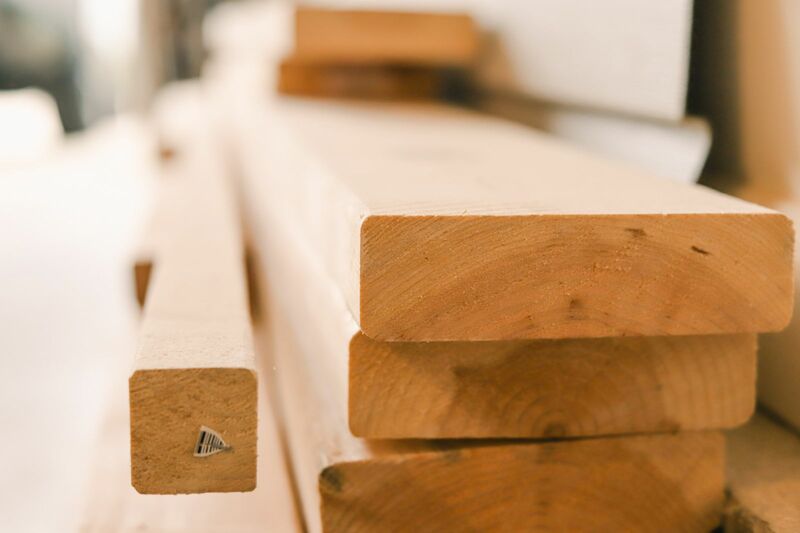
The illiquidity in the lumber futures market only exacerbated the wild price swings over the past years. The Chicago Mercantile Exchange (CME) replaced the old random-length lumber futures with a new physical contract in 2023 to address the liquidity issues. The physical contract is smaller and more flexible, providing more delivery grades and locations than the random-length contract.
In a May 17, 2023, Barchart article, I wrote:
Increasing rates takes time to filter through the economy, and the central bank will likely pause and watch as its tight monetary policy over the past year continues to erode inflation. The bottom line is the data favors no further rate increases in 2023. As consumers adjust their expectations to the new environment, the demand for new homes could begin to edge higher. Moreover, migration from high-tax to low-tax states could increase new home construction on a regional basis.
Nearby July CME physical lumber futures were at the $527.50 per 1,000 board feet level on June 15, as the short-term trend turned higher from the June 1 $478 low.
CPI showed inflation is slowing
The May consumer price index rose 0.1% for the month, at a 4% annual rate, the lowest in two years. Excluding food and energy, core CPI rose 0.4% and 5.3%, respectively. The inflation barometer continued its decline.

Source: CNBC
The chart highlights CPI’s drop from over 8% in 2022 to the 4% level in May 2023. While there has been a less dramatic decline in core CPI, falling inflation indicates that the Fed’s interest rate hikes have been filtering through the economy. The May producer price index also experienced a significant decline.
A less aggressive Fed supports lumber prices.
The FOMC pauses
On June 14, the Fed paused its interest rate hikes, leaving the short-term Fed Funds Rate at the 5.125% level. The current short-term rate was the central bank’s 2023 target. While the FOMC’s statement said the path of monetary policy would remain data dependent, the odds of any significant rate hikes have declined with the inflation barometer.
The central bank will allow the previous rate hikes and quantitative tightening to continue filtering through the economy, but a continuation of declining inflation will support no more rate hikes. The Fed continued its hawkish rhetoric, and even increased its forecast rate to 5.60% for 2023, but the first pause since March 2022 and the trend in inflation indicators are signs the central bank is close to the end of hiking rates, meaning mortgage rates will stabilize.
Lumber is rate sensitive
Lumber is an industrial commodity that is a primary ingredient in new home building. The trajectory of rate hikes since the end of 2021 caused 30-Year fixed-rate conventional mortgages to rise from below 3% to over 7%, precluding many new home buyers from the market. Home prices declined over the past year, and a pause and the end of the tightening cycle could cause buyers to emerge and new home building to increase over the coming months.
The bottom line is the housing market may not be as robust as when rates were lower, but mortgage rate stability should increase the demand.
Lumber futures have edged higher
Lumber futures turned higher after reaching a $478 per 1,000 board feet low on June 1.

The chart highlights July lumber futures’ 10.4% rise to the $527.50 level on June 15. Meanwhile, the total number of open long and short positions in the July contract has been rising, reaching a 5,253 peak on June 7. As July futures roll to September, open interest has declined over the past sessions, but the next contract has experienced a rise in the metric.

The chart of September futures shows the increase in open interest to 2,081 contracts as July rolls to September. Total open interest was at the 7,321 level on June 14.
Meanwhile, September futures rose 7.6% from $500.50 on June 5 to $538.50 per 1,000 board feet on June 15.
What’s next for lumber?
I do not expect lumber futures to run away on the upside. In my May 17 Barchart article, I wrote:
As the market adjusts to more restrictive monetary policy, the demand could increase over the coming years. The 2024 spring season could see a rise in lumber demand, meaning the market may need a year of consolidation to break out of the current trading range.
Technical resistance on the September contract is at the mid-March $550 per 1,000 board feet high. Above there, September futures reached $658.50 in late January 2023. I would be surprised if lumber futures eclipse the late January high, but in the illiquid wood futures market, surprises on the up and downside are routine. Meanwhile, I expect the decline in inflation and Fed’s pause as constructive events for the new home market. However, as lumber futures roll to the September futures contract, the offseason for building during the winter will be on the horizon. We may have to wait until the end of the year for any sustainable rallies as the wood market shifts its attention to the spring construction season in 2024.
On the date of publication, Andrew Hecht did not have (either directly or indirectly) positions in any of the securities mentioned in this article. All information and data in this article is solely for informational purposes. For more information please view the Barchart Disclosure Policy here.






